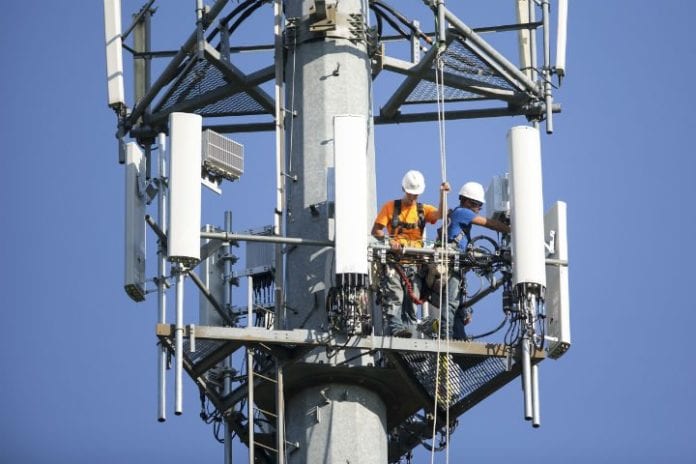Sprint CTO John Saw touted 2017 network plans to include expansion of 3CCA, HPUE into devices, small cells, 5G preparation, 256 QAM and more MIMO.
Sprint appeared to show some new spark in 2016, including a continued push of its network transformation it expects to roll into 2017.
In touting plans for 2017, Sprint CTO John Saw said the carrier will continue to focus on adding coverage and capacity “where it’s needed,” including further expansion of its three-channel carrier aggregation network technology and the use of its recently announced high performance user equipment device technology.
In a year-end blog post, Saw noted the carrier’s 3CCA technology was currently available in more than 100 markets, with demonstrated network speeds of more than 200 megabits per second. The only device that currently supports the technology, which aggregates three 20-megahertz channels in the 2.5 GHz band, is the HTC Bolt, though the Samsung Galaxy S7 and Apple iPhone 7 are expected to receive over-the-air 3CCA updates.
Saw also reiterated the carrier’s recently announced plans to deploy HPUE technology into devices early this year, which Sprint has said will extend the reach of its 2.5 GHz-based network by up to 30%. The carrier noted last month the HPUE technology comes from a power upgrade in the device designed to allow for greater uplink connectivity support.
The new power class 2 standard was approved by the Third Generation Partnership Project on Dec. 6, and has garnered support from China Mobile and Sprint’s parent company SoftBank; chipset vendors Qualcomm and MediaTek; and device makers Samsung, ZTE, LG, HTC, Motorola and Alcatel. Notably absent from the device support list is Apple, though the carrier does note it expects the HPUE technology to be in all new devices in the next two years.
Saw noted that despite the increased transmitting power from within the device, there was virtually no impact on battery performance. The HPUE technology itself is currently limited to LTE band class 41, which is a time division duplexing band class for the 2.5 GHz spectrum band. Band class 41 has garnered support from a number of telecom operators working through the Global TD-LTE Initiative.
As for Sprint’s controversial network densification and optimization plan, Saw noted the carrier will continue to “light up more small cells with a very cost-efficient model using dedicated spectrum and innovative backhaul solutions.” Sprint last month highlighted its deployment of 200 small cells in Manhattan, which the carrier said supported a 43% increase in median download speeds and 56% increase in median upload speeds.
Saw also explained the network efforts were being put in place as a “strong foundation for ‘5G,’” which the carrier has been testing across various spectrum bands, though has said its 2.5 GHz spectrum holdings would be the low-band spectrum platform for those deployments.
“In our mind, 2.5 GHz is going to be to 5G what 800 [MHz] is to the 4G world,” explained Sprint CFO Tarek Robbiati at a recent investor conference.
Saw also touched on continued work with some new technologies like 256 quadrature amplitude modulation and massive multiple-input/multiple-output antenna technology he said is supporting LTE network speeds nearing 1 gigabit per second using the carrier’s licensed spectrum.
“This will be an important demonstration with speed as a proxy for capacity showcasing the incredible potential of our deep 2.5 GHz spectrum position,” Saw noted.
In a similar year-end blog post last week, T-Mobile US CTO Neville Ray said the carrier was also working with 256 QAM, 3CCA and 4×4 MIMO in an “unreleased handset” that showed network speeds of up to 979 megabits per second in a lab environment. T-Mobile US last year said it expected to support LTE network speeds of up to 400 Mbps using both 4×4 MIMO and 256 QAM technology.
Bored? Why not follow me on Twitter.

